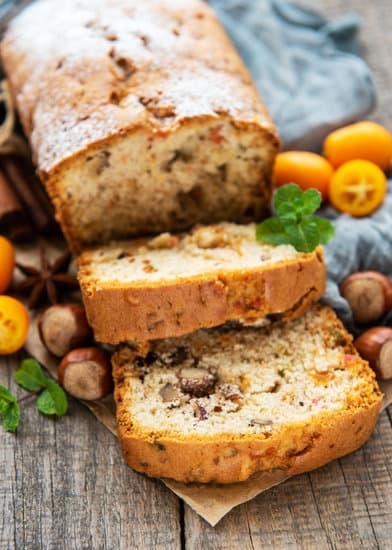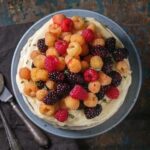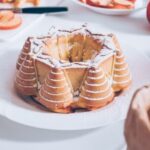Properly decorating a cake is not just about making it look visually appealing, but also about showcasing your creativity and skill. In this blog post, we will explore the essential tools, ingredients, techniques, and tips for achieving a beautifully decorated cake that will impress your friends and family. From frosting to fondant to edible decorations, we will cover everything you need to know to elevate your cake decorating game.
To create stunning cakes, you’ll need the right tools such as piping bags, tips, spatulas, and more. Key ingredients like frosting, fondant, and edible decorations are crucial for adding the finishing touches. Before diving into decorating, it’s important to properly prepare the cake by baking and cooling it correctly. Leveling and layering the cake will ensure a professional look that serves as a solid foundation for your decorations.
Whether you’re a beginner or an experienced baker looking to refine your skills, this guide will provide detailed instructions on frosting techniques and using fondant as a decorating medium. Learn how to create textured or marbled effects with frosting, work with fondant to shape intricate designs, and master various piping techniques with buttercream. Stay tuned for creative ideas on incorporating edible decorations like fresh fruit or flowers to enhance the overall presentation of your cakes.
Essential Tools and Ingredients
When it comes to properly decorating a cake, having the right tools and ingredients is essential. The tools you will need include piping bags, tips, offset spatula, turntable, and a cake smoother. Piping bags and tips are necessary for intricate designs and decorations, while an offset spatula helps in applying frosting smoothly. A turntable makes it easier to work on all sides of the cake, and a cake smoother ensures a professional finish.
In addition to the tools, key ingredients for decorating a cake include frosting, fondant, and edible decorations. Frosting acts as the base for decorating and can be colored and flavored to suit your preferences. Fondant is a versatile medium that allows you to create elaborate designs and shapes for your cake. Edible decorations such as fresh fruit, flowers, sprinkles, and edible paints add the finishing touch to your creation.
Utilizing the Right Tools
Before starting with the actual process of decorating a cake, it’s crucial to gather all the necessary tools in one place. Make sure your piping bags are clean and fitted with the desired tips for specific designs. An offset spatula will help you spread frosting evenly across the cake’s surface. Investing in quality tools can make a significant difference in how your final decorated cake looks.
Selecting Quality Ingredients
When it comes to selecting ingredients for decorating a cake, quality matters. Opt for high-quality frosting that is easy to work with and has a smooth consistency. Fondant should be pliable but not sticky – ensuring you can easily roll it out without any tearing or cracking. Edible decorations should be fresh and vibrant to enhance the overall appearance of your decorated masterpiece. By using top-notch ingredients, you can elevate the look of your cake decoration significantly.
Whether you’re an experienced baker looking to refine your skills or a beginner eager to learn how to properly decorate a cake, having essential tools and high-quality ingredients is key to success. Ensuring you have everything at hand before starting will make the process smoother and more enjoyable. With these foundational elements in place, you’ll be well on your way to creating stunning cakes that impress everyone with their visual appeal.
Preparing the Cake for Decorating
Before you can start decorating a cake, it is essential to ensure that the base is well-prepared. Here are some steps on how to properly prepare your cake for decorating:
1. Baking and Cooling: Begin by baking your cake according to your preferred recipe. Once baked, allow the cake to cool completely before attempting to decorate. A warm or hot cake can cause the frosting to melt and slide off.
2. Leveling and Layering: To achieve a professional look, it is important to level your cake layers before stacking them. This can be done using a serrated knife or a cake leveler tool. Make sure each layer is even to create a stable foundation for decoration.
3. Crumb Coating: Before applying your final layer of frosting or fondant, consider doing a crumb coat. This thin layer of frosting traps any loose crumbs, ensuring that your final decorations will be smooth and clean.
By following these steps, you can set yourself up for success when it comes to decorating your cake. Don’t rush through this process as it forms the basis for a beautifully decorated final product.
Remember, patience and attention to detail are key when it comes to preparing your cake for decorating correctly. Taking the time to do these initial steps thoroughly will make the actual decoration process much smoother and more enjoyable in the end.”.
Techniques for Frosting a Cake
When it comes to properly decorating a cake, mastering the art of frosting is essential. The way you apply frosting can make a significant difference in the appearance and overall presentation of your cake. To achieve a smooth and professional look, start by making sure your cake layers are even and properly cooled. This will provide a solid base for the frosting to adhere to.
To begin frosting your cake, you will need a few key tools such as an offset spatula and a turntable for easy maneuvering. Start by applying a thin layer of frosting, known as a crumb coat, to seal in any loose crumbs. Once this layer has set, you can apply a thicker coat of frosting for the final finish. Use long strokes with the spatula to spread the frosting evenly across the top and sides of the cake.
For those looking to add some creativity to their cakes, experimenting with different frosting techniques can elevate your decorations to the next level. Try using different piping tips to create intricate designs or textures on your cakes. You can also play around with marbling effects by blending different colors of frosting together. The possibilities are endless when it comes to frosting techniques.
| Key Tools for Frosting | Key Ingredients for Frosting |
|---|---|
| Offset Spatula | Frosting |
| Piping Bags | Fondant |
| Piping Tips | Edible Decorations |
Using Fondant as a Decorating Medium
Fondant has become a popular choice for cake decorators due to its versatility and smooth finish. However, working with fondant requires some technique and practice to achieve the desired results. Below, we’ll delve into the process of using fondant as a decorating medium and provide some helpful tips for success.
Rolling Out the Fondant
Before you can start decorating with fondant, you need to roll it out to the right thickness. Dust your work surface with powdered sugar or cornstarch to prevent sticking, then use a rolling pin to roll out the fondant evenly. Aim for a thickness of about 1/8 inch for easy handling and application on the cake.
Cutting and Shaping Fondant
Once you have rolled out your fondant, you can cut it into various shapes and sizes to suit your design needs. Use cookie cutters, sharp knives, or specialty tools to create different shapes for decorating your cake. To adhere fondant pieces together or onto the cake, use a small amount of water or edible glue for a secure attachment.
Creating Intricate Designs
Fondant provides a blank canvas for creating intricate designs on cakes. You can use sculpting tools, embossing mats, or textured rolling pins to add details and patterns to your fondant decorations. Experiment with different techniques such as ruffling, quilting, or hand-painting on fondant to elevate the visual appeal of your cake.
By mastering the art of using fondant as a decorating medium, you can take your cake decoration skills to the next level. Practice makes perfect when it comes to working with fondant, so don’t be discouraged by initial challenges. With patience and dedication, you’ll soon be able to create stunning cakes that are sure to impress any crowd.
Piping and Decorating With Buttercream
Buttercream is a versatile and popular medium for cake decoration due to its smooth texture and delicious flavor. Learning how to properly decorate a cake with buttercream can take your creations to the next level. One of the first steps in using buttercream for decorating is mastering different piping techniques. From simple stars and rosettes to intricate floral designs, piping allows you to add dimension and visual interest to your cakes.
To start, ensure that your buttercream is at the right consistency – not too stiff or too runny. Practice piping on a flat surface before moving onto your cake to get a feel for the pressure needed to create different shapes and patterns. Using different piping tips can also help achieve various effects, so experiment with different sizes and styles to find what works best for your design.
Aside from traditional piping techniques, buttercream can also be used creatively for other decorations on cakes. For example, writing messages or names with buttercream can personalize a cake for any occasion. Borders made with buttercream can add a finishing touch around the edges of the cake.
Remember, practice makes perfect when it comes to decorating with buttercream, so don’t be afraid to try new things and experiment with different designs. With patience and practice, you’ll soon master the art of decorating cakes with buttercream.
Adding Edible Decorations
When it comes to decorating a cake, adding edible decorations can take your creation to the next level and wow your guests. Whether you’re looking to add a pop of color with fresh fruit, a touch of elegance with edible flowers, or a sprinkle of fun with colorful sprinkles, there are endless possibilities for embellishing your cake. Here are some ideas and tips on how to properly decorate a cake with edible decorations:
- Fresh Fruit: Adding fresh fruit to a cake not only adds flavor but also adds a vibrant, natural aesthetic. Some popular options include berries, sliced kiwi, or citrus fruits like lemon or orange. Make sure to wash and prepare the fruit before placing it on the cake to ensure cleanliness.
- Edible Flowers: Edible flowers can add a sophisticated touch to any cake. From roses and pansies to lavender and violets, there are many edible flower varieties that can be used for decoration. Ensure that the flowers are organic and pesticide-free before using them on your cake.
- Sprinkles and Confetti: For a playful and colorful decoration, sprinkle some confetti or colorful sprinkles over your frosted cake. These small decorations add texture and whimsy to your creation. Make sure to gently press them onto the frosting so they adhere properly.
In addition to these ideas, you can also use edible paints, glitter dust, chocolate shavings, or even small candy embellishments like pearls or jewels. The key is to experiment and have fun with different combinations of edible decorations until you find a style that suits your taste and the occasion for which you are decorating the cake.
Remember that when adding edible decorations to a cake, it’s important to consider both taste and aesthetics. You want your decorations not only to look beautiful but also to complement the flavor of the cake itself. So go ahead, get creative in how you adorn your cakes with edible delights.
Troubleshooting Common Decorating Mistakes
When it comes to decorating a cake, it’s not uncommon for mistakes to happen along the way. From frosting that doesn’t smooth out evenly to fondant tears or smudges, there can be various challenges that arise during the decorating process. However, with a few tips and tricks up your sleeve, you can quickly fix these common decorating mistakes and still achieve a beautifully decorated cake.
One common issue that many decorators face is air bubbles in their frosting. These pesky bubbles can create an uneven and bumpy surface on your cake, taking away from its overall appearance. To fix this problem, try using a toothpick or small needle to gently pop the air bubbles while smoothing out the frosting with a spatula. Be careful not to press too hard and damage the cake underneath.
Another common mistake when working with fondant is experiencing tears or cracks in the delicate material. If you find yourself facing this issue, don’t worry – there’s a simple solution. Simply knead the torn area gently with clean hands to warm up the fondant and then press the tear back together.
Smooth out any excess fondant around the tear for a seamless finish. Remember to handle fondant with care and avoid stretching it too thin to prevent tears from occurring in the first place.
Lastly, if you accidentally smudge or mess up your frosting design while working on your cake, don’t panic. You can easily cover up minor imperfections by adding extra decorations like edible flowers, sprinkles, or piping designs.
Embrace improvisation and creativity when facing decorating mishaps – sometimes these unplanned additions can turn out even better than your original design idea. Remember, practice makes perfect when it comes to honing your decorating skills, so don’t be afraid to experiment and learn from each mistake along the way.
Conclusion
Properly decorating a cake is an essential skill for any baker looking to impress their friends, family, or clients. From creating smooth and even frosting to intricate fondant designs, the art of cake decorating can truly elevate a simple dessert to a work of art. By following the right techniques and using the necessary tools and ingredients, anyone can learn how to properly decorate a cake.
One key takeaway from this blog post is the importance of preparation when it comes to cake decorating. From properly baking and cooling your cakes to leveling and layering them for a professional finish, each step plays a crucial role in creating a visually stunning dessert. Additionally, mastering techniques such as piping with buttercream or working with fondant can take your cakes to the next level.
In conclusion, while mastering the art of cake decorating may take time and practice, the results are well worth it. By following the tips and techniques outlined in this blog post on how to properly decorate a cake, you can take your baking skills to new heights. Remember to experiment with different styles and designs, as creativity is key in creating beautiful and delicious works of art that will surely impress all who indulge in them.
Frequently Asked Questions
How Do You Decorate a Cake Like a Professional?
Decorating a cake like a professional involves several key steps. First, it’s essential to have the right tools, including piping bags, different tips, and offset spatulas.
Second, mastering basic techniques like crumb coating, smooth icing, and piping borders will help achieve a polished look. Finally, practicing with different decorations such as fondant shapes, buttercream flowers, or royal icing details can take your cake decorating skills to the next level.
What Is the Technique in Decorating a Cake?
The technique in decorating a cake requires precision and attention to detail. Start by preparing and leveling your cake layers before applying a crumb coat for smooth icing.
Different techniques include piping buttercream swirls or flowers using various tips, creating intricate designs with fondant or gum paste, or even painting edible decorations on the cake’s surface. Practice and patience are key to mastering these techniques and creating beautifully decorated cakes.
What Are the Different Tips for a Successful Cake Decoration?
Successful cake decoration relies on various tips that can elevate the final result. Using a turntable while frosting ensures even coverage and smooth finishes. Experimenting with different icing consistencies for piping techniques is essential for achieving intricate designs or borders.
Additionally, incorporating texture through techniques like ruffles, rosettes, or basketweave can provide interest and dimension to cake decorations. Finally, don’t underestimate the power of color coordination and balance in creating visually appealing cakes that impress both aesthetically and taste-wise.

Welcome to our cake decorating blog! My name is Destiny Flores, and I am the proud owner of a cake decorating business named Cake Karma. Our mission is to provide delicious, beautiful cakes for all occasions. We specialize in creating custom cakes that are tailored specifically to each customer’s individual needs and tastes.





